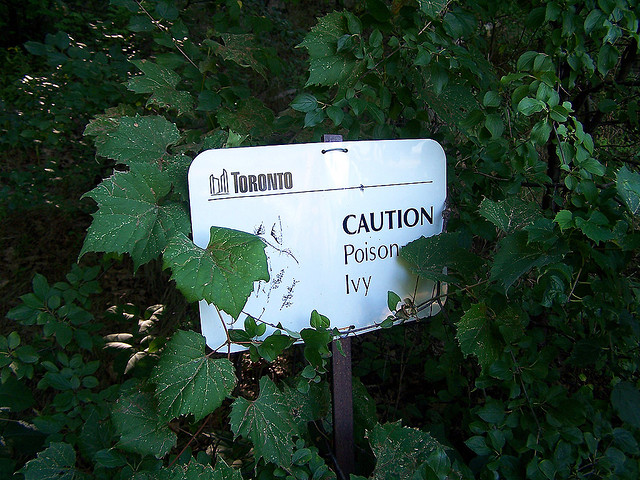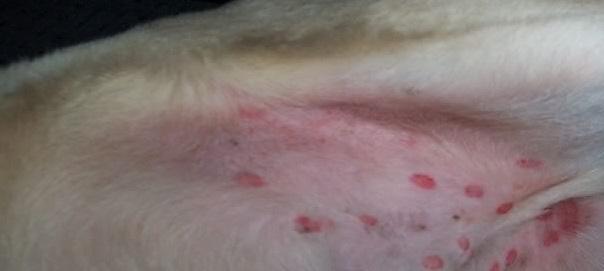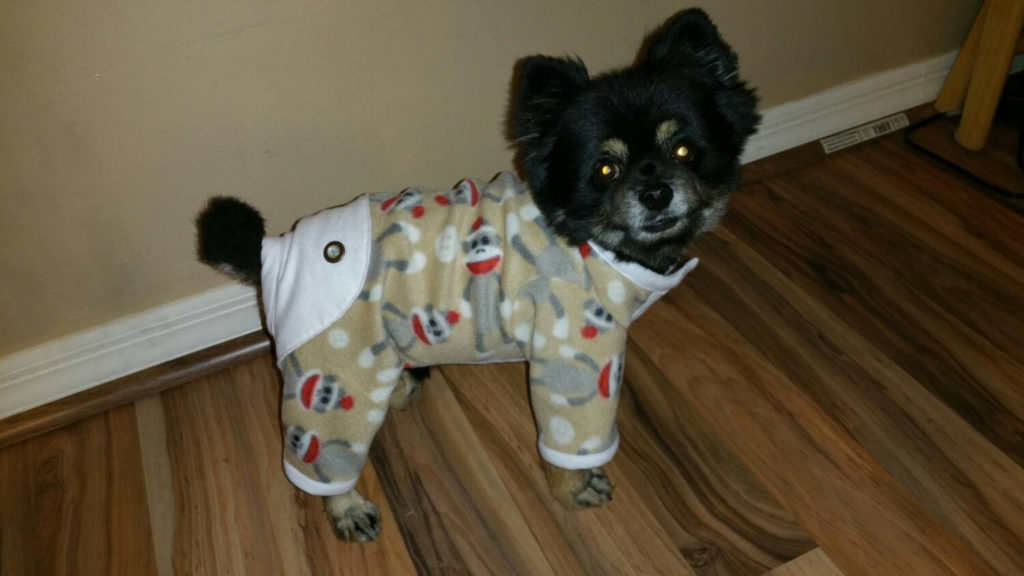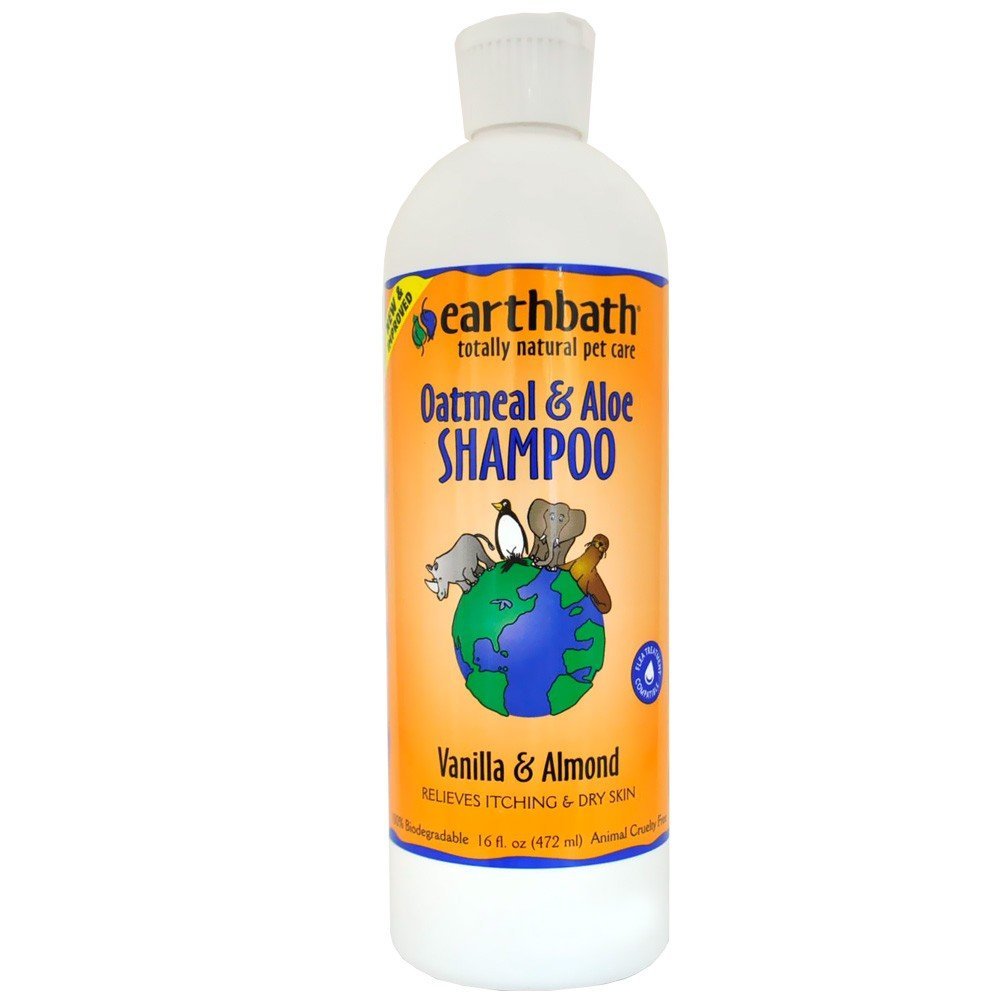We all know Posion Ivy is terrible for humans come in contact with it. But did you know it can affect your dog as well? Dr. Scott Perry, a Preferred Provider with Vet24seven, answered our questions about dogs and poison ivy so you can be prepared if you dog ever rolls in it. Follow Dr. Perry on Facebook and Twitter (@Vet24seven)

Do all breeds of dogs have a reaction to poison ivy? Where are they most likely to pick it up? Nature trail walks? Backyard?
Dr. Perry: Although it is an uncommon occurrence, poison ivy may effect dogs by causing a papular rash progressing to blisters on the skin. All dogs are susceptible to the effects of poison ivy as there is no known resistance to its toxic resin. Dogs are most likely to come into contact with poison ivy in places where the ground is most “disturbed.” This includes nature trail walks along paths, up trees and fences, along the edge of the backyard, and even mixed in with the landscaping.
How and where on my dog should I look for signs of poison ivy? What does the rash look like on a dog? (Is it different than what it looks like on a human?)
Dr. Perry: The most likely place on the body for signs of poison ivy to develop are the areas that are less protected by hair and therefore have more skin exposure to the oil resin. This especially includes the inguinal (i.e. “groin”) regions, external genitalia, muzzle, and armpits. However, all aspects of the body that are sparsely covered by hair are at risk and this may include the top of the body in short haired breeds.
How does poison ivy affect a dog? Does it make him itchy? Have a fever? What’s his discomfort level?
Dr. Perry: Poison ivy effects the skin of a dog in much the same way as it does a human. It first causes raised bumps and redness of the skin. These bumps are called papules and most closely resemble a pimple. The resin of the poison ivy plant results in a local histamine release within the skin, which is very itchy to the dog and also increases blood flow to the area. The increased blood flow is what makes the skin appear redder. As the condition becomes more chronic, the papules may start to blister and ooze a clear fluid. When this occurs, the skin is more susceptible to bacterial infections, which results in more histamine being released, thus perpetuating the scratch-itch cycle and inflammation.

The level of pain a dog may feel when effected by poison ivy correlates with the extent of inflammation. As the condition is left untreated and becomes more chronic, the discomfort level in the dog ranges from mild to severe. A fever is unlikely in the early stages of inflammation, but one may develop later if the condition is left untreated. This occurs when the temperature reaches 103 degrees Fahrenheit at which point the dog may appear lethargic, depressed, and lose his appetite.
How can I reduce my pet’s risk of having a reaction to poison ivy? Allergy pills? Special dog clothing? Is there a test a vet can do to determine if my pet is allergic to poison ivy before going for a hike in a wooded area?
Dr. Perry: The only sure way of reducing your pet’s risk of reaction to poison ivy is to limit his exposure. Use of a T-shirt or other fabric that covers exposed areas of skin may help to reduce contact with the poisonous resin of the plant. Particular areas of coverage should be focused on the abdomen and inguinal (i.e. “groin) regions. Since a reaction to poison ivy is caused by histamine being released within the skin, an antihistamine like Benadryl or Claritin may help to prevent an allergic reaction. The dose for Benadryl is 1-2 mg/lb used every 8 hours. The dose for Claritin is 1/8 – 1/4 mg/lb used every 24 hours. Approved topical products that include an antihistamine or steroid may also be applied at the discretion of a veterinarian.

Antihistamines may be used as a preventative and given prior to potential exposure to poison ivy whereas topical products will have better utility if given when signs of poison ivy on the skin are observed. Please be sure to apply a protective barrier to your hand if applying any topical product to the skin, as contact with the poison ivy resin on the skin may result in an infection to you!
Allergy testing may also be available to determine if your dog is sensitive to poison ivy. However, not every laboratory tests for poison ivy and it will depend on your location. Therefore, check with your veterinarian to determine if poison ivy is one of the plants that will be tested.
Finally, if my dog does get poison ivy, what are his treatment options? How long does it take for him to feel better?
Dr. Perry: If your dog happens to come into contact with poison ivy the first thing that should be done is to bathe him immediately. Typical bathing techniques may be used, which includes warm water and an oatmeal based shampoo. It is important to remember that the resin of the poison ivy is more likely to rest on the hair of the dog than it is to reach your dog’s skin. Contact of the fur with your skin may result in an infection to you. Therefore, it is recommended to apply gloves to your hands when applying topical products and shampoos to prevent direct skin contact. It is also advised to immediately wash the towels that were used in drying your dog.

Continue to closely monitor the skin for improvement, which may take up to 5-7 days for complete resolution. If signs of papules (“red bumps”) and redness are seen beyond this time, or if the signs spread to other parts of the body or progress to blistering, contact your veterinarian right away.
